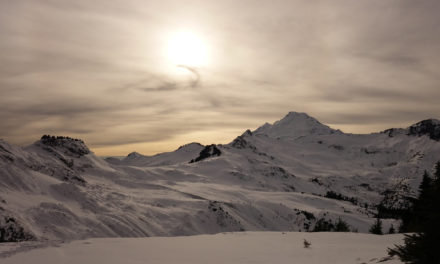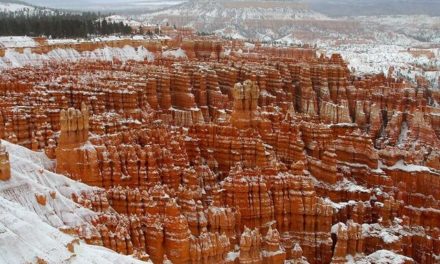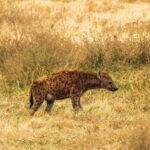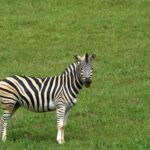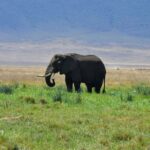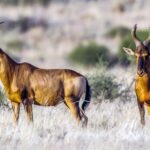Table of Contents
Overview / About
Located on the island of Maui, Hawaii, Haleakalā National Park protects the massive dormant volcano Haleakalā, which rises 10,023 feet above sea level. The park covers over 33,000 acres, ranging from tropical rainforest to alpine desert, making it one of the most ecologically diverse places in the United States.
The name Haleakalā means “House of the Sun” in Hawaiian — a fitting title for a place where watching sunrise above the clouds is an unforgettable experience. The park is divided into two main districts: the Summit District, known for its volcanic landscapes and panoramic views, and the Kīpahulu District, home to lush rainforests, waterfalls, and coastal pools.
Wildlife & Nature
Haleakalā’s diverse ecosystems support rare and endemic Hawaiian species found nowhere else on Earth.
Key Wildlife: Hawaiian goose (nēnē), Hawaiian petrel (‘ua‘u), hoary bat, and the colorful Maui silversword plant (‘āhinahina).
Flora: The park shelters native shrubs, ferns, and alpine plants that have adapted to the harsh volcanic environment. In the Kīpahulu rainforest, banyan trees, bamboo groves, and orchids thrive in the humid air.
Geology: The volcanic crater, stretching over 7 miles across and 2,600 feet deep, is dotted with cinder cones and lava flows that reveal the island’s fiery origins.
Experiences & Activities
From summit to sea, Haleakalā offers a wide range of experiences:
- Sunrise & Sunset Viewing: The highlight of any visit — sunrise from the summit is world-famous. Reservations are required for sunrise entry.
- Hiking: Over 30 miles of trails, including:
- Sliding Sands Trail (Keonehe‘ehe‘e): Descends into the volcanic crater.
- Pīpīwai Trail: A rainforest trail leading to the 400-foot Waimoku Falls.
- Stargazing: With minimal light pollution, the summit is one of the best stargazing spots in the Pacific.
- Cultural Sites: Learn about Native Hawaiian traditions, sacred landscapes, and the park’s cultural significance through ranger programs.
- Wildlife Viewing: Spot nēnē geese near the summit or native birds in the Kīpahulu rainforest.
Best Time to Visit
Haleakalā National Park is open year-round, but conditions vary greatly by elevation.
- Spring (March – May): Mild weather, fewer crowds.
- Summer (June – August): Warm in Kīpahulu; cooler at the summit.
- Autumn (September – November): Excellent hiking conditions and clear skies.
- Winter (December – February): Cold and windy at high elevations; occasional frost at the summit.
Sunrise and sunset are stunning year-round, though mornings are often clearer.
How to Reach & Park Entry
Location: Eastern Maui, accessible via the Haleakalā Highway (Route 378).
Nearest Airport: Kahului Airport (OGG) – about 1.5 to 2 hours by car to the Summit District, and around 3 hours to Kīpahulu.
Entrances:
- Summit District: Reached via Haleakalā Highway from Kahului.
- Kīpahulu District: Accessed along the scenic Hāna Highway on Maui’s southeast coast.
Entry Fees:
- $30 per private vehicle (valid for 3 days for both districts).
- Sunrise reservation fee ($1 per vehicle) required for summit access between 3:00 AM – 7:00 AM.
Where to Stay / Camping Options
Inside the Park:
- Hosmer Grove Campground: Near the summit; basic facilities, cool nights.
- Kīpahulu Campground: Near the ocean; lush setting with nearby waterfalls.
- Backcountry Cabins: Wilderness cabins at Hōlua and Palikū (permit required).
Nearby:
- Kula and Makawao: Small upcountry towns with lodges and inns.
- Hāna: Offers boutique stays and coastal lodges near the Kīpahulu area.
Travel Tips / Safety Notes
- Dress in layers: Temperatures can drop below freezing at the summit.
- Reserve early: Sunrise viewing requires advance online reservations.
- Drive carefully: The summit road is steep, winding, and can be foggy.
- Stay hydrated: Altitude can cause fatigue; drink plenty of water.
- Respect cultural sites: Haleakalā is sacred in Hawaiian tradition, visit with care and mindfulness.
- Leave no trace: Pack out all trash and stay on marked trails.
Conservation & Responsible Tourism
Haleakalā National Park plays a vital role in protecting Hawaii’s endangered species and fragile ecosystems. The park’s staff and local communities work together to restore native habitats and control invasive plants and animals.
To travel responsibly:
- Stay on trails to protect delicate alpine vegetation.
- Avoid introducing non-native species (clean shoes and gear).
- Respect native wildlife and observe from a distance.
- Support local Hawaiian-owned businesses and cultural guides.
- Conserve water and minimize waste during your visit.



